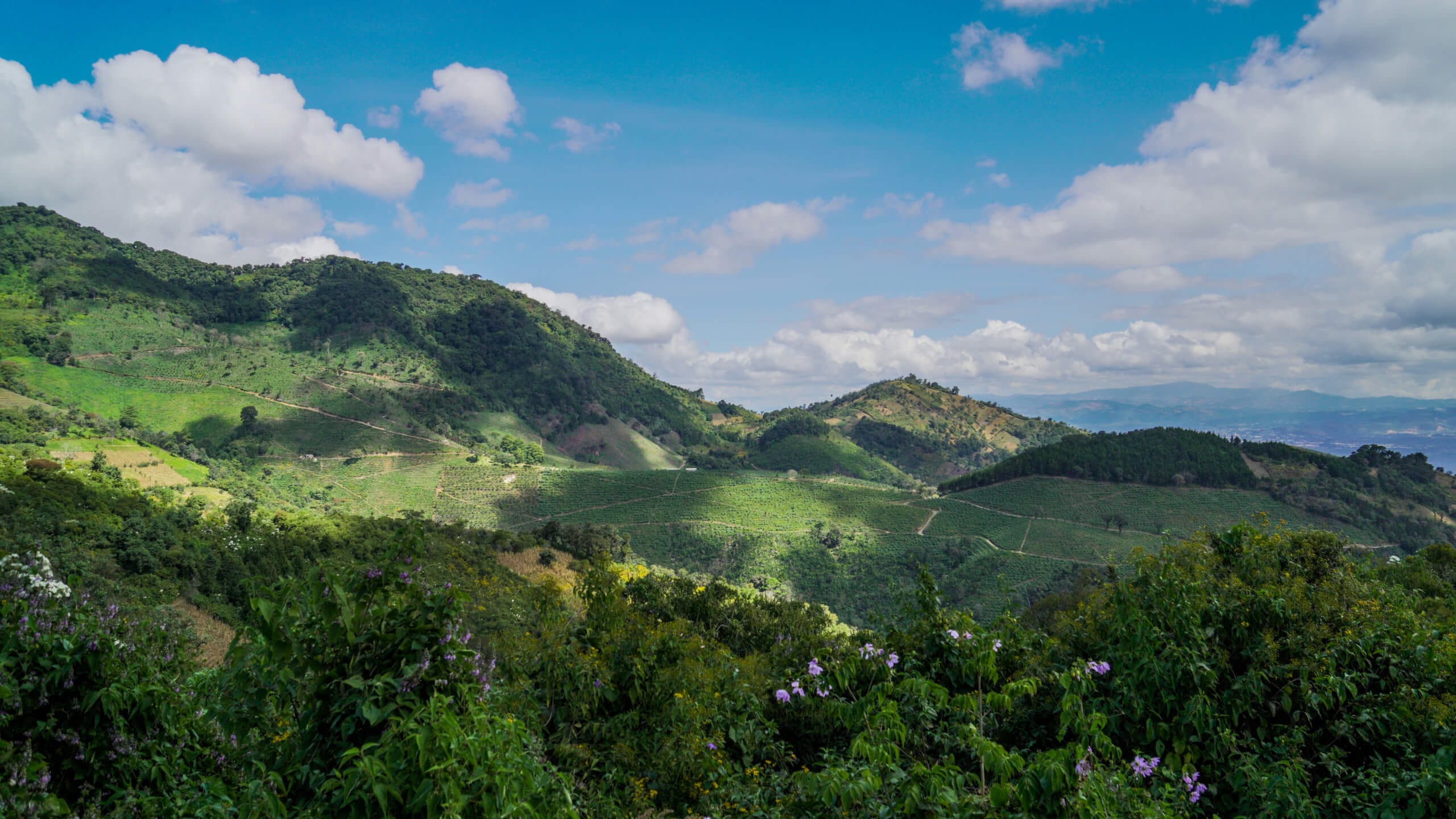Reforestation in
Guatemala
From mangroves along the coast to wetlands further inland, Guatemala has the second highest biodiversity in Central America. It's home to 1,246 animal species and 8,681 plant species, 13.5% of which are endemic. Its varied topography makes it prone to landslides, floods, and other natural disasters — and it is one of the 10 most vulnerable countries in the world to extreme weather and natural disasters.
Despite its rich biological and cultural heritage, Guatemala's natural resources are threatened by habitat loss, over-exploitation, wildlife trafficking, agricultural encroachment, climate change, weak governance, and organized crime. The agencies managing these resources face chronic underfunding, insufficient personnel, and limited institutional capacity. This combination of threats and managerial challenges poses significant risks to the conservation and sustainable use of Guatemala's biodiversity and ecosystems.

Guatemala Stats
137
species threatened
In 2023, 137 animal species in Guatemala were listed as vulnerable on the IUCN Red List—and another 66 were critically endangered.
Number of threatened animal species in Guatemala on the IUCN Red List in 2023, by category, Statista
13%
Endemic species
13% of species in Guatemala are endemic, the highest species endemism rate in Central America.
Biodiversity/Guatemala, Interactive Country Fiches
14
Ecoregions
Guatemala is among the world's most biologically diverse nations, with 14 ecoregions and rich cultural diversity.
Aichi Biodiversity Target 11 Country Dossier: GUATEMALA, Convention on Biological Diversity
49%
Natural Forest
As of 2020, 49% of land cover in Guatemala was natural forests.
Guatemala Deforestation Rates, Global Forest Watch
75%
Habitat Loss
At least 75% of California’s original habitat has already been lost.
60%
Of Water
60% of potable water in California is sourced from forested watersheds.
Project Highlights
Planting trees in Guatemala helps restore degraded forests, protect biodiversity, and improve local communities' livelihoods. The country’s unique ecosystems are home to diverse species, and reforestation helps combat soil erosion, preserve water resources, and sequester carbon, contributing to global climate change mitigation efforts. Learn about three recent reforestation projects that planted trees in Guatemala!

Agroforestry for Coffee Growing Communities in Sololá
This project focuses on planting native trees to restore microclimates and foster long-term ecosystem stewardship within communities. By improving coffee production conditions and introducing fruit plants, communities experience additional benefits, motivating them to preserve trees. Volunteers play a key role by identifying and mobilizing plants, cleaning grounds, and digging holes. Their training covers tool management, forest species identification, exotic animal management, first aid, and tree planting basics, enhancing their effectiveness.
Restoring the Southwest Coast of Guatemala
This project aims to restore Guatemala's mangrove ecosystems by planting and monitoring 1,330,000 mangrove and broadleaf trees over four years to restore 1,025 hectares. Mangrove forests are crucial for regional stability and local livelihoods but face threats from illegal logging, pollution, and unbalanced hydrological conditions. By increasing mangrove plantings in the Manchón Guamuchal forest and expanding efforts to local farms and watersheds, the project addresses environmental challenges and enhances community resilience.


Regenerative Agroforestry on Contour for Guatemalan Communities
This project transformed land from slash-and-burn corn monocultures to biodiverse agroforestry systems, enhancing erosion control, biodiversity, carbon sequestration, and water filtration. By training communities and buying their produce for processing, local economies are also boosted. Agroforestry systems increase food security and nutrition while promoting sustainable practices, all while empowering locals to continue this regenerative transition independently.


